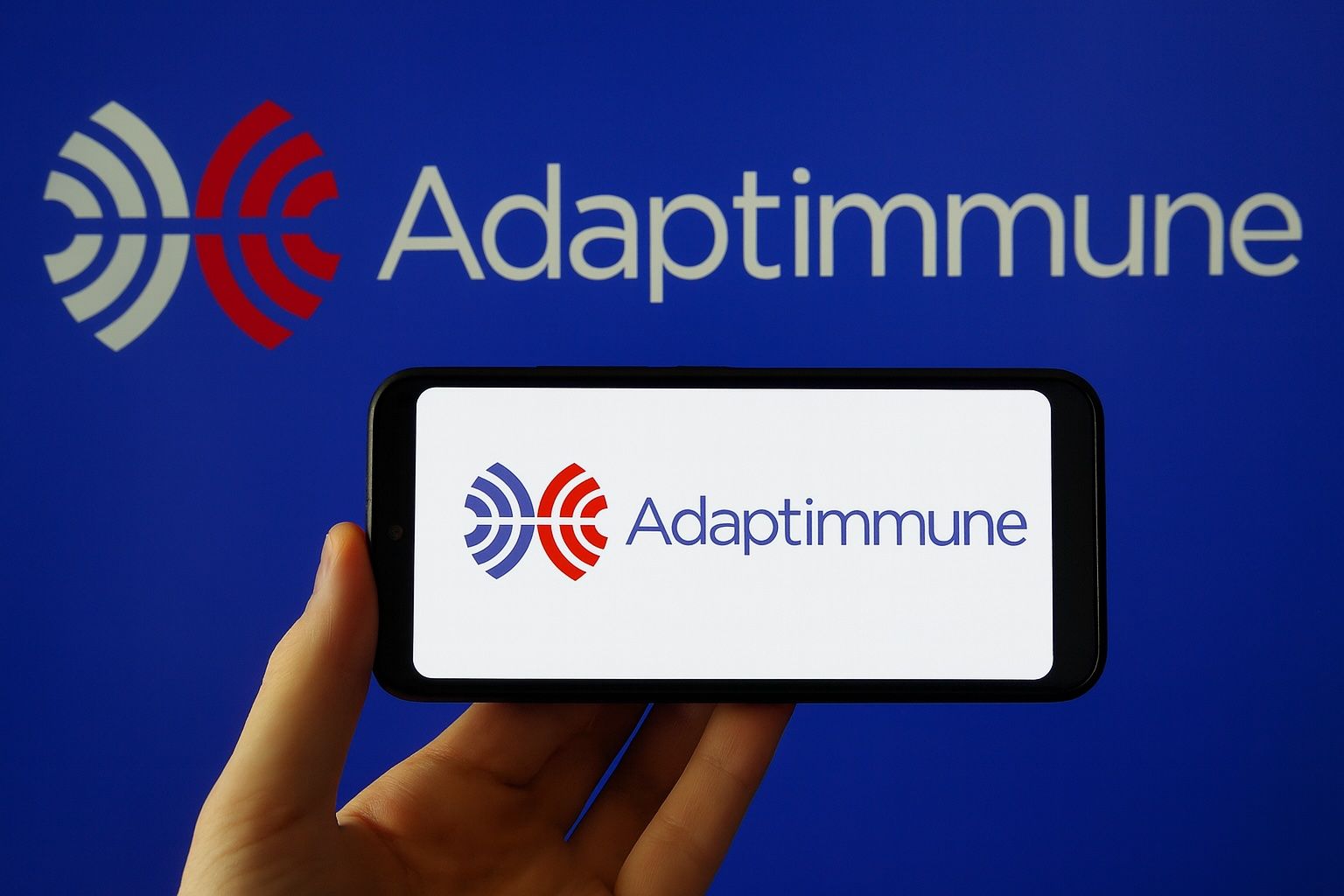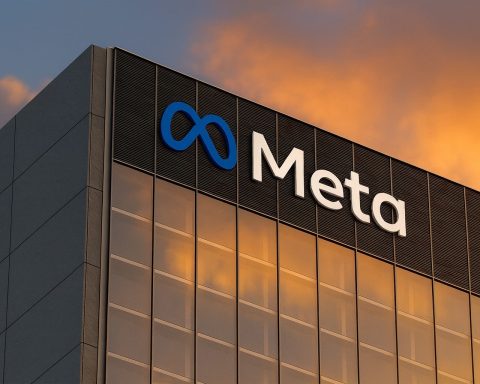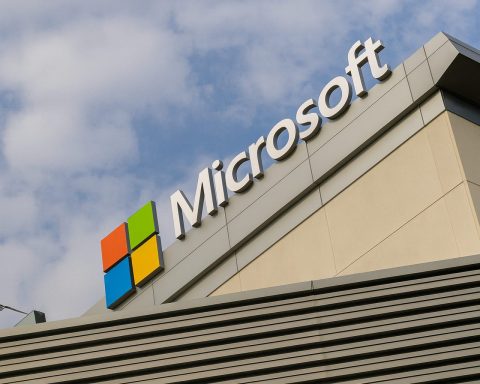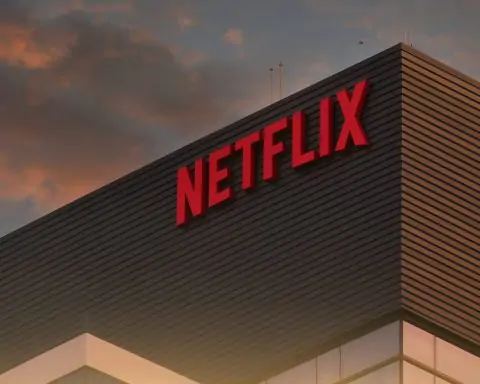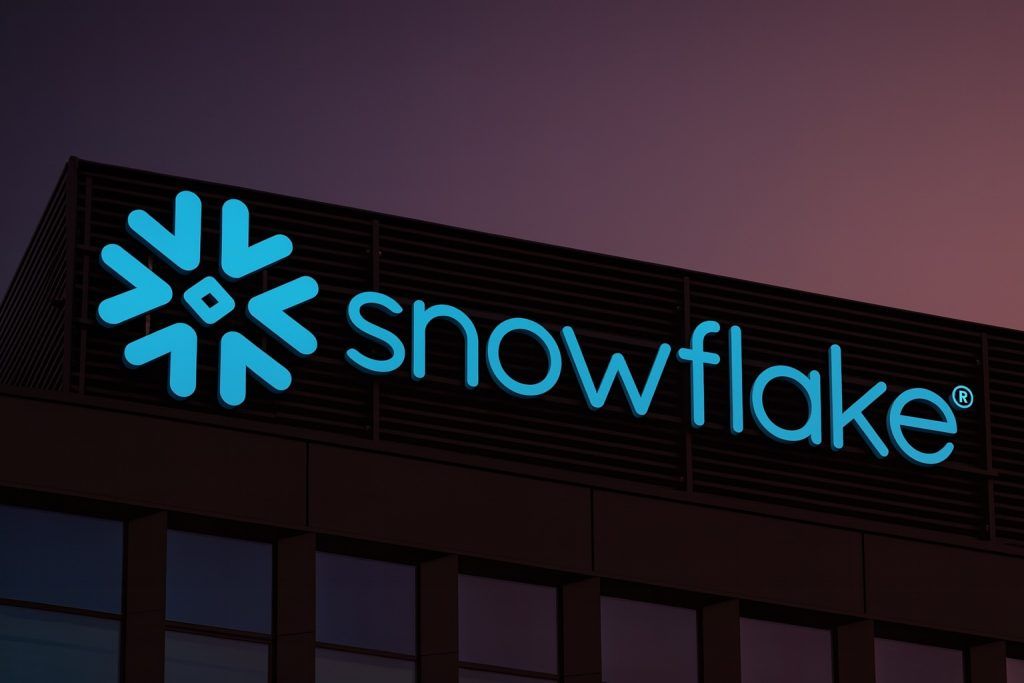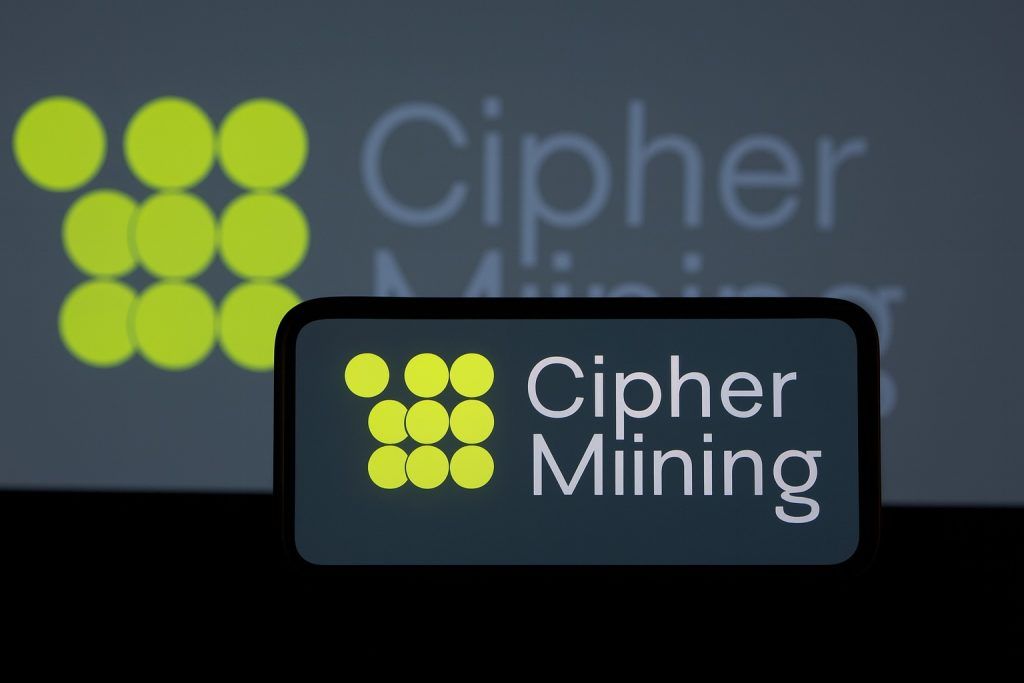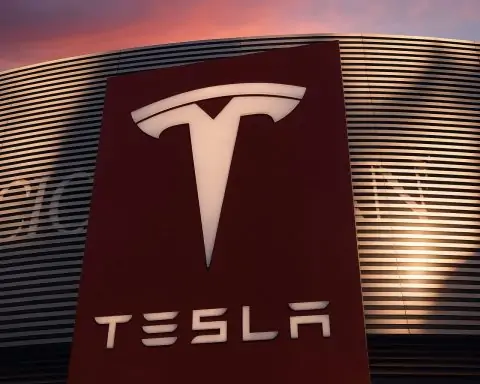- Surging Stock Price: Adaptimmune Therapeutics’ stock has been explosively volatile. It jumped about 42% on October 8, 2025 alone, trading around $0.20 per share [1]. Just weeks earlier, on Sept. 19, ADAP nearly doubled intraday (a 98% surge from $0.08 to $0.16) and then climbed another 30% after-hours to $0.2020 [2]. These swings underscore extreme speculation and high trading volume (over 705 million shares traded that day vs ~60M average [3]).
- Recent Price Range: Even after the rebound, ADAP remains a penny stock. At ~$0.20, its market capitalization is only about $50 million [4]. The stock is far below its 52-week high of $0.91, though well off the all-time low of $0.04 hit during the summer [5]. As of Oct 7, 2025, ADAP closed around $0.14 (market cap ~$35M) [6] before the latest spike.
- Analyst Warnings: On Oct 8, Weiss Ratings slapped Adaptimmune with a “Sell (E+)” grade – an unusually low rating [7]. Several Wall Street analysts have also turned more cautious. For instance, Mizuhodowngraded ADAP from “Outperform” to “Neutral” in June and slashed its price target from $1.50 to $0.50 amid concerns about the company’s outlook [8]. Overall, ADAP carries a consensus “Reduce” rating (equivalent to underperform) with an average price target around $1.35, though that figure predates recent events [9].
- Asset Sell-Off to Stay Afloat: In July 2025, Adaptimmune announced a surprise fire-sale of its four leading cell therapy programs – including its newly approved T-cell therapy TECELRA – to private pharma US WorldMedsfor $55 million upfront plus up to $30M in milestones [10] [11]. This drastic step was intended to raise cash and pay off all the company’s debt [12]. Adaptimmune’s CEO admitted the deal was critical “given the financial situation of the company” and the need to ensure patients keep access to Tecelra [13]. Following the sale, Adaptimmune has refocused on just its early-stage pipeline(preclinical PRAME and CD70-targeted T-cells and an allogeneic platform) [14], while restructuring and cutting its workforce by ~62% [15] [16].
- Latest Developments (Oct 2025): Apart from the Weiss rating, there have been no new product announcements as of early October. The recent stock surge appears driven by speculative trading momentum rather than concrete news [17]. Adaptimmune did report Q2 2025 earnings in August, which beat revenue expectations at $13.7 million (vs ~$11M forecast) thanks to initial Tecelra sales [18]. Net loss for Q2 was ~$30.3M (–$0.11 per share) [19] [20]. However, with the Tecelra franchise now sold off, future revenues hinge on milestone payments and new partnerships.
- Industry Standing: Adaptimmune made history with Tecelra (afamitresgene autoleucel) in 2024 as the first FDA-approved engineered T-cell therapy for a solid tumor (synovial sarcoma) [21]. The company was seen as a leader in TCR T-cell therapy, even inking a $3 billion collaboration with Genentech – which Genentech later terminated in 2024 amid pipeline re-prioritizations [22]. After merging with TCR² Therapeutics in 2023 to bolster its pipeline, Adaptimmune aimed to build a “preeminent cell therapy company for solid tumors” [23]. Now, post-asset-sale, it’s a much smaller player focused on early research, while rivals like Iovance (TIL therapy) and Immatics (TCR therapeutics) continue advancing their late-stage programs in solid tumors.
- Pipeline Outlook: Adaptimmune’s remaining pipeline is slim but potentially valuable. The table below summarizes the status of key therapies:
| Therapy (Target) | Indication | Status (2025) | Current Ownership |
|---|---|---|---|
| TECELRA(afamitresgene, targets MAGE-A4) | Synovial sarcoma (unresectable/metastatic) | FDA approved Aug 2024 [24]; ~16 patients treated in launch year [25]. | Sold to US WorldMeds (2025) [26] |
| Letetresgene (lete-cel, NY-ESO-1) | MRCLS and synovial sarcoma (advanced solid tumors) | Phase II completed (42% response rate) [27]; FDA Breakthroughdesignation in 2025 [28]; BLA filing planned for 2025. | Sold to US WorldMeds (2025) [29] |
| Uzatresegene (uza-cel, next-gen TCR) | Solid tumors (MAGE-A4 TCR, partnered with Galapagos) | Preclinical/IND-enabling stage; partnership deal $665M signed 2024 [30]. | Sold to US WorldMeds (2025) [31] |
| PRAME-targeted TCR | Multiple cancers (PRAME antigen) | Preclinical (IND-enabling on hold to cut costs) [32]. | Retained by Adaptimmune [33] |
| CD70-targeted TCR | Hematologic malignancies (CD70 antigen) | Preclinical (IND-enabling on hold) [34]. | Retained by Adaptimmune [35] |
| Allogeneic T-cell platform | Solid tumors (off-the-shelf TCR T-cells) | Research stage (early development). | Retained by Adaptimmune [36] |
- Investor Sentiment: Investor reactions to Adaptimmune’s saga are mixed. Some contrarian retail traders argue the stock is undervalued – noting that the $55M cash from the asset sale is greater than ADAP’s entire market cap (~$50M), which theoretically gives the remaining pipeline “for free.” However, the bear case is strong: management itself warned of “substantial doubt” about the company’s ability to continue as a going concern back in March 2025 [37]. On the institutional side, only ~31% of shares are held by funds [38], and a major insider (director Ali Behbahani) sold ~14.7 million shares in August at a mere $0.01 each [39] – a signal of distress. Nonetheless, a few hedge funds did boost stakes earlier in 2025, likely bottom-fishing; e.g. Two Seas Capital and Long Focus Capital each accumulated over 20 million shares during Q1 [40].
ADAP Stock Price & Recent Movements
Adaptimmune’s stock has been on a rollercoaster in 2025, epitomizing the volatility of small-cap biotech. After a prolonged decline to mere pennies (52-week low $0.04 [41]), ADAP staged a spectacular rally in late September. On Sept 19, heavy trading momentum (fueled by speculative chat and perhaps algorithmic “meme stock” interest) saw the stock open at just $0.08 and close at $0.16 – a 98% single-day jump. It didn’t stop there: in after-hours trading, ADAP leapt another 30% to $0.2020 [42] despite no new company news that day [43]. This frenzy was highlighted in market reports as one of the most active stocks, with 705 million shares changing hands (versus a ~60M daily average) [44].
Fast-forward to early October, and the stock was still extremely volatile. After pulling back to the mid-teens (closing $0.1395 on Oct 7 [45]), ADAP once again skyrocketed ~42% on Oct 8, 2025, hitting roughly $0.20intraday [46]. This surge coincided with a flurry of trading interest – by mid-day Oct 8, ADAP was up ~38.5% on volume exceeding 400M shares, making it one of the top gainers on NASDAQ that session [47]. The absence of any fresh catalyst suggests the move was driven by technical trading, short covering, or investor speculation rather than fundamentals.
Such dramatic swings underscore that ADAP is essentially trading on sentiment and momentum at this stage. The stock’s technical profile reflects a high-risk, high-reward penny stock. Even after recent pops, ADAP’s price (~$0.18–$0.20) is a far cry from a year ago; it has lost over 80% of its value year-to-date [48]. The 50-day moving average is around $0.09, and the 200-day average about $0.20 [49] – meaning the Oct 8 jump finally brought the stock back near its longer-term average. The beta of ~2.5 indicates ADAP is more than twice as volatile as the overall market [50]. Traders should be prepared for continued wild swings: intraday ranges of 20–30% (or more) have become common for ADAP in recent weeks.
Recent News & Developments (Fall 2025)
Analyst Downgrades Spark Attention (Oct 8, 2025): The most notable news on Oct 8 was an analyst ratings updatethat underscored bearish sentiment. Weiss Ratings – known for its stringent grading system – reissued an exceptionally low “Sell (E+)” rating on Adaptimmune [51]. (For context, Weiss uses letter grades; E+ is effectively a deep-junk rating.) This reiteration of a Sell comes after a series of downgrades by Wall Street firms over the summer. Notably, Mizuho Securities cut its rating from Outperform to Neutral back in late June and slashed its price target from $1.50 to $0.50 [52], citing the company’s uncertain future following the asset sale. Guggenheim also threw in the towel around that time, downgrading ADAP from “strong buy” to “hold” [53]. The upshot: as of October, no major analyst recommends buying Adaptimmune, reflecting pervasive caution. According to MarketBeat data, the stock now has 1 Buy, 5 Hold, and 2 Sell ratings, with a consensus to “Reduce” exposure [54]. The average price target (for what it’s worth) stood around $1.35 per share [55] – which is almost tenfold the current price, but this figure hasn’t yet adjusted for the recent business overhaul and likely overestimates future prospects.
Q2 2025 Earnings and Tecelra’s Launch (August 2025): Adaptimmune’s last quarterly report as an integrated commercial-stage company was for Q2 2025, released Aug 13. Paradoxically, the results were better than expected in several ways. Revenue for the quarter came in at $13.7 million, handily beating consensus estimates (~$8.6M–$11M) [56] [57], thanks to Tecelra sales accelerating. In fact, Tecelra (afamitresgene) – launched in late 2024 for synovial sarcoma – contributed $11.1M in Q2 product revenue, with 16 patients treated/invoiced in the quarter [58]. This was >150% growth over Q1’s patient count [59], as the network of authorized treatment centers expanded to ~30 sites nationwide ahead of schedule [60]. The company also touted a 100% manufacturing success rate for the personalized T-cells and no insurance denials – indicating smooth initial commercialization [61].
On the bottom line, Adaptimmune reported a net loss of $30.3M for Q2 (roughly –$0.11 per share in ADR terms) [62] [63]. This was a narrower loss than expected (EPS beat by ~$0.04), partly due to aggressive cost-cutting. R&D expenses in Q2 dropped to $23M (down 43% year-over-year) as the company trimmed programs and headcount [64] [65]. Still, the cash burn remained worrying: by June 30, cash and equivalents had dwindled to just $26.1M [66] [67], down from $91M at 2024’s end. Management acknowledged on the Q2 call that without drastic action, they had less than 12 months of cash runway left [68] – a classic red flag.
These pressures set the stage for the dramatic corporate moves announced in late July and into Q3:
Fire-Sale of Key Assets (July–Sept 2025): On July 28, 2025, Adaptimmune stunned investors by announcing it would sell off its crown jewels – essentially the entire late-stage and commercial pipeline – to US WorldMeds, a private Kentucky-based pharma. The deal included Tecelra (already marketed) and three pipeline TCR T-cell therapies (lete-cel, afami-cel, and uza-cel) for $55 million in cash upfront [69], plus up to $30M in future milestones [70]. Adaptimmune’s board, after exploring “all strategic alternatives,” concluded this was the best (or only) path to preserve some value [71]. CEO Adrian Rawcliffe noted that given the company’s finances, “securing the right strategic option was critical… to ensure our patients continue to receive Tecelra” [72]. In other words, Adaptimmune could not afford to independently commercialize Tecelra or bring the next product (lete-cel) to market. By selling these programs, they at least guaranteed Tecelra’s availability to patients under a deeper-pocketed owner and got cash to survive.
The sale closed within days (by early August). Adaptimmune used part of the $55M to fully repay its debt (around $40Mowed to Hercules Capital) [73], immediately shoring up the balance sheet. The company also announced layoffs for the majority of its staff. US WorldMeds agreed to hire roughly half of Adaptimmune’s 500+ employees (primarily those in clinical and manufacturing roles for the therapies) [74] [75]. Adaptimmune then cut ~62% of its remaining workforce post-deal [76], leaving a small skeleton team to focus on the two in-house preclinical programs. Several top executives departed as well: the Chief Medical Officer, Chief Commercial Officer, Chief Scientific Officer, and CFO all exited by August 2025 as part of the restructuring [77]. Essentially, Adaptimmune “slimmed down” into a near-shell company to conserve cash while hoping its early pipeline can be advanced via partners.
US WorldMeds, for its part, expressed enthusiasm. “Anchored by a first-in-class commercial therapy and a promising pipeline, this acquisition is a meaningful step forward in our mission to bring hope and innovation to patients,” said Breck Jones, CEO of US WorldMeds [78]. USWM’s plan is to continue marketing Tecelra (no treatment interruption) and to push lete-cel toward FDA approval (which was anticipated in 2026) [79] [80]. They also take over development of uza-cel in collaboration with Galapagos NV (which had partnered on that candidate) [81]. Adaptimmune retained only the rights to its early research assets (PRAME, CD70 TCRs, plus an allogeneic program) and is free to develop or license those.
FDA & Pipeline Updates: With most advanced programs gone, Adaptimmune’s direct pipeline news has been sparse. One notable earlier update: in January 2025, the company announced that lete-cel (letetresgene autoleucel) received FDA Breakthrough Therapy Designation for treating myxoid/round cell liposarcoma, based on impressive Phase 2 data [82]. Lete-cel showed a 42% response rate in synovial sarcoma/liposarcoma (including some complete responses) and median response duration of ~12 months [83] – strong results in these hard-to-treat cancers. Adaptimmune had been prepping a rolling BLA submission for lete-cel in late 2025 [84], aiming for a 2026 launch. Now, US WorldMeds will take on those regulatory efforts. For Adaptimmune’s remaining candidates, the company had paused IND-enabling studies in early 2025 to save cash [85]. Any revival of PRAME or CD70 programs will likely require new funding or a partner, so there have been no new trials initiated yet.
In summary, the recent period has transformed Adaptimmune from a would-be fully integrated biotech into a stripped-down R&D outfit. The news flow in autumn 2025 reflects that new reality: attention is on financial maneuvers, ratings, and speculations about what’s next, rather than typical biotech milestones like trial readouts (since those programs are either discontinued or out-licensed).
Analyst & Expert Commentary
Industry observers and analysts have been frank about Adaptimmune’s predicament. The tone from experts is cautiousto outright pessimistic, even as the stock gyrates on hype. Here are a few key perspectives:
- Weiss Ratings (Oct 2025): The Weiss “Sell (E+)” grade basically flags Adaptimmune as one of the riskiest stocks in its universe [86]. It’s noteworthy because Weiss evaluates financial strength; such a low grade implies serious concern about balance sheet health and viability. Weiss typically reserves E-rated scores for companies in distress – aligning with Adaptimmune’s own admission of going-concern doubts earlier in the year [87].
- HC Wainwright (Summer 2025): Even before the asset sale, some analysts grew lukewarm. HC Wainwright moved to a Neutral stance by July 2025 [88], effectively taking a wait-and-see approach. With the company’s flagship therapies sold, analysts have little basis to stay bullish. As one commentator put it, “Adaptimmune’s story has fundamentally changed – it’s no longer about revenue growth from Tecelra or upcoming approvals, but about whether the slimmed-down entity can reinvent itself or attract a buyer before the cash runs out.” (This sentiment was echoed across several investment forums and notes.)
- Mizuho’s Downgrade (June 2025): Mizuho’s analyst, when cutting the price target to $0.50, cited the dilution of shareholder value and uncertain pipeline value post-deal [89]. They essentially implied that while the $55M sale provided a lifeline, it also meant Adaptimmune gave up its near-term growth drivers. “We see limited upside in the near term with only early-stage assets remaining,” the Mizuho note suggested, assigning a value not much above cash on hand.
- FierceBiotech Commentary: Trade publication FierceBiotech described Adaptimmune as “writing was on the wall” leading up to the sale [90]. They pointed out that despite making history with Tecelra’s approval, the company’s solo commercial launch was burning cash and facing the prospect of another solo launch for lete-cel – a heavy lift for a small biotech [91]. The termination of the Roche/Genentech partnership in April 2024, followed by a quick smaller deal with Galapagos, was viewed as a sign that big pharma had lost some confidence [92]. In FierceBiotech’s July 28 article, they quoted CEO Rawcliffe’s own words from the press release: “…given the financial situation of the company, it is clear that securing the right strategic option was critical…” [93] and noted that Adaptimmune had effectively conceded defeat in trying to go it alone. Analysts in that piece commended the move to seek a partner (or acquirer) rather than risk a total collapse.
- Investing.com Earnings Analysis: Following Q2, an analysis on Nasdaq/Investing.com highlighted the paradox of Adaptimmune’s results: “strong early commercialization… but financial profile has become more limited” [94]. It noted that year-on-year revenues were actually down 89% (since Q2 2024 included big one-time partnership payments) [95], and emphasized that post-sale, “only two internal programs remain… now the main source of possible revenue” [96]. The analysis labeled Adaptimmune’s financial health score as “WEAK” (1.11 out of 5) and pointed out its gross margin of –97.7% and heavy negative cash flow [97] [98]. One blunt line from the report: “the company’s limited cash runway of less than 12 months could significantly impact future operations” [99], underscoring why management had to make drastic changes.
In essence, expert opinion is that Adaptimmune’s stock rally is on thin ice. Bulls argue that if Adaptimmune can secure a new partnership or monetization for PRAME/CD70, today’s ~$0.20 share price could prove a bargain. But bears (which include most covering analysts) counter that without such a deal, the remaining cash will dwindle and further dilution or even insolvency looms. It’s a classic high-risk binary situation, and analysts are erring on the side of caution, as reflected in the predominance of Hold/Sell ratings [100].
Technical Analysis and Future Outlook
From a technical analysis perspective, ADAP’s chart is the definition of a penny stock breakout and retracement. The massive spike in late September blew through any prior resistance, sending the stock from ~$0.08 to ~$0.20 in a single day. Unsurprisingly, this was followed by profit-taking and volatility in the ensuing sessions. Key technical markers:
- Moving Averages: As mentioned, the stock’s 50-day MA (~$0.09) lies well below current levels, reflecting how sharply the price jumped in recent weeks [101]. The 200-day MA (~$0.20) roughly coincides with the Oct 8 closing price [102]. If ADAP can hold above the 200-day average, that would be a bullish signal of a potential trend reversal (previously the stock had been trading below its 200-day for most of 2025). However, failing at this level could mean the rally was a one-off event.
- Relative Strength Index (RSI): While exact figures aren’t quoted in sources, such a rapid ascent likely pushed short-term RSI into overbought territory (>70) during the peaks, suggesting a pullback was due. Traders have indeed seen swings: after the Sept 19 spike, ADAP dropped back and consolidated around $0.12–$0.15 (relieving overbought conditions) before the early Oct secondary jump.
- Support/Resistance: On the upside, $0.20–$0.24 may act as immediate resistance, since $0.239 was the intraday high on Oct 8 [103]. Beyond that, a more psychological level is $0.50, which also coincides with Mizuho’s post-sale target and was a support level earlier in 2025 before the crash. On the downside, the mid-teens (~$0.12–$0.15) is a support zone (where the stock traded in early October and late September after the spike). Below that, $0.08 is the next major support (pre-spike levels), and then the all-time low ~$0.04 is the ultimate floor. The wide gaps in price indicate air pockets – thinly traded ranges where the stock could move very fast in either direction if news hits.
- Volume & Momentum: Volume remains hugely elevated compared to historical norms, indicating strong trader interest. Momentum scanners flagged ADAP as one of the top “most active stocks” on multiple days [104]. High volume on up-moves is generally positive, but it can also signal blow-off tops if not sustained. If volume dries up, the stock could drift lower; if high volume continues on rallies, it suggests momentum traders might make another push.
Looking ahead, the stock’s fate will hinge on fundamental catalysts more than chart patterns. In the near term, one potential catalyst is the upcoming Q3 2025 earnings (expected in November 2025 [105]). However, with Tecelra sales now off its books post-Q2, Adaptimmune’s financials will drop sharply – likely a minimal revenue quarter, which could spook investors unless accompanied by positive guidance on cash runway or pipeline plans.
More crucial will be any strategic news: for example, if Adaptimmune announces a licensing deal or collaboration for its PRAME or CD70 TCR programs, that could justify recent stock optimism and possibly propel shares higher. Conversely, if months pass with no such developments, the market’s patience may wear thin, and the stock could retrace toward its pre-spike levels or lower as the cash burn resumes.
Price Forecasts: Formal Wall Street forecasts are in disarray given the transformation of the company. The nominal consensus 12-month target around $1+ [106] appears outdated, assuming success of programs that Adaptimmune no longer owns. A more grounded outlook might be to value Adaptimmune close to its net cash plus a speculative premium for the pipeline. With ~$55M received and debt paid, Adaptimmune likely has on the order of $30–40M net cash heading into Q4 (exact updates pending). That’s roughly $0.12–$0.16 per share in cash. The market’s current pricing at ~$0.18-$0.20 suggests a slight premium, implying investors are assigning maybe a ~$10–15M value to the PRAME/CD70 programs and other intangibles. If a partnership or positive data emerges, that premium could increase significantly (driving shares higher). If not, the stock could gravitate back toward cash value or see further dilution risk (the company may need to raise capital in 2026 if no deals materialize).
Independent analysts on forums have a wide range of opinions, from those predicting the stock could “catch up to its deal size” (i.e. approach the $55M valuation of what it sold) to skeptics who fear it could go to zero. At this juncture, Adaptimmune behaves more like an option than an equity – a bet on a future turnaround or buyout. The technicals reflect that binary nature: explosive upside moves on speculation, and potentially steep drops on any disappointment. Cautious investors will likely stay on the sidelines or keep positions small, while thrill-seeking traders might continue to ride the waves. In sum, expect volatility to remain extreme, and any future stock price forecast must be taken with a grain of salt given the company’s uncharted new course.
Company Background & Competitive Positioning
Adaptimmune Therapeutics was founded in 2008 in the UK, and over the past decade it became a pioneer in the field of T-cell receptor (TCR) engineered T-cell therapies. These are a form of immunotherapy where a patient’s own T-cells are genetically modified to express a designed TCR that can recognize cancer-specific antigens (in Adaptimmune’s case, often intracellular cancer-testis antigens like MAGE-A4, NY-ESO-1, etc.). This approach is analogous to CAR-T cell therapy (which has been successful in blood cancers) but targets solid tumors, a much tougher challenge. Adaptimmune branded its platform as SPEAR T-cells (Specific Peptide Enhanced Affinity Receptor). By 2020, it had a robust pipeline of SPEAR T-cells in clinical trials for sarcomas, ovarian cancer, lung cancer, and more [107].
The company’s innovation and potential attracted major partners:
- In 2014, GlaxoSmithKline (GSK) partnered with Adaptimmune on the NY-ESO TCR program, which eventually led to lete-cel’s development. However, GSK later returned rights to certain programs (like PRAME and NY-ESO) to Adaptimmune around 2019–2020 [108], refocusing their priorities.
- In 2019, Roche’s Genentech struck a blockbuster collaboration with Adaptimmune (worth up to $3 billion in milestones) to develop allogeneic TCR therapies [109]. This was seen as a huge validation. But in April 2024, Genentech terminated that partnership as part of cost-cutting and strategic shifts [110]. This was a big blow – Adaptimmune lost a source of milestone revenue (it had received $150M+ upfront from Genentech) and some industry confidence was shaken. Ts2.tech noted that Genentech’s pullout from Adaptimmune in 2024 echoed a broader pattern of big pharmas reevaluating expensive cell therapy bets [111].
Amid these ups and downs, Adaptimmune sought to scale up:
- In early 2023, it announced a merger with TCR² Therapeutics (NASDAQ:TCRR) [112], another biotech working on TCR-T cells (notably, TCR²’s approach included a mesothelin-targeted T-cell therapy for solid tumors). The all-stock merger, completed in Q2 2023, brought TCR²’s pipeline (including gavocabtagene autoleucel for mesothelioma) under Adaptimmune’s umbrella. The combined company kept the Adaptimmune name and ticker and was led by Adaptimmune’s CEO Adrian Rawcliffe. The rationale was to create a “preeminent cell therapy company for solid tumors” [113], pooling resources and extending the cash runway. Initially, this looked promising: they had multiple Phase 2 programs, a commercial product on the horizon, and about $200M in combined cash.
However, the harsh reality of biotech caught up by late 2024 and 2025. The competitive landscape in solid tumor cell therapy is challenging:
- Iovance Biotherapeutics is pursuing a different cell therapy (tumor-infiltrating lymphocytes, TILs) and has been in late-stage for melanoma. They’ve also faced delays and cash burn issues, showing how tough commercializing cell therapy for solid tumors can be.
- CAR-T therapies for solid tumors (by players like BMS, J&J) have largely struggled, underscoring that Adaptimmune’s TCR approach, while more targeted, still faces biological hurdles (solid tumors have suppressive microenvironments, antigen heterogeneity, etc.).
- Immatics (IMTX) and Immune Design/Merck (G100), and other TCR-focused companies (like the now-defunct Alaunos (TCRT)) are all working on similar concepts. Adaptimmune was ahead in that it actually got an approval – a first in class. But competitors have taken note of Adaptimmune’s difficulties: the need for better durability, combination therapies, or maybe allogeneic solutions to make solid tumor T-cells more viable commercially.
Adaptimmune’s niche was targeting certain niche solid tumors (like synovial sarcoma) where the target antigens (MAGE-A4, NY-ESO-1) are commonly expressed. In that niche, Adaptimmune was essentially leading – Tecelra’s approval in synovial sarcoma gave it a head start. Yet the market size for that indication is small (synovial sarcoma is ultra-rare), so it was never going to be a huge revenue generator initially (analysts projected ~$25–35M sales in 2025 [114], which now will go to US WorldMeds). Adaptimmune was banking on expanding into broader cancers (like head & neck, ovarian, etc. via trials like SURPASS-3 [115]) with next-gen SPEAR T-cells. Those plans are now uncertain or transferred to partners.
In summary, Adaptimmune’s competitive positioning has dramatically shifted:
- Pre-2025, it was a frontrunner in TCR T-cell therapy, albeit in a very challenging field, competing by innovation and partnerships.
- Post-asset-sale, it is now a much smaller player with early-stage assets. It will likely need to partner with larger firms or perhaps position itself for an acquisition if its PRAME or CD70 TCRs show promise. The company has effectively stepped out of the near-term competition for launching cell therapies, ceding that to the likes of US WorldMeds (with Tecelra/lete-cel) and others.
The hope for Adaptimmune is that by surviving this difficult period, it can reinvent or stabilize and later re-enter the race with a next-generation product or platform (for example, an off-the-shelf allogeneic TCR cell that might attract new collaboration). Until then, in the eyes of investors, Adaptimmune is more of a speculative turnaround story than a direct competitor in the current commercial landscape of biotech.
Pipeline Overview & Key Therapies
With the transformative deal in mid-2025, Adaptimmune’s pipeline split into two parts: what it sold vs. what it kept. For clarity, here’s a rundown of the key programs:
- Tecelra® (afamitresgene autoleucel) – Indication: Synovial sarcoma (certain advanced cases). This was Adaptimmune’s flagship product, a TCR T-cell targeting MAGE-A4 presented by HLA-A2. FDA-approved in Aug 2024 under accelerated approval [116], Tecelra became the first ever engineered TCR T-cell therapy on the market. It showed ~39% response rate in its pivotal trial for synovial sarcoma, leading to approval for patients after chemotherapy. Adaptimmune launched it in 2024 and treated initial patients in 2024–25 [117] [118]. Status: Sold to US WorldMeds in July 2025 [119]. USWM now markets Tecelra; Adaptimmune retains no rights, though it ensures continuity of care.
- Lete-cel (letetresgene autoleucel) – Indication: Synovial sarcoma and Myxoid/Round Cell Liposarcoma (MRCLS). This TCR targets NY-ESO-1. It was in Phase II (IGNYTE-ESO trial), where it met its primary endpoint with a 42% overall response rate [120]. It received Breakthrough Therapy Designation in early 2025 [121]. Adaptimmune was actively preparing to file a BLA for lete-cel by end of 2025, aiming for approval in 2026 [122]. Internal projections saw lete-cel as a bigger opportunity than Tecelra (due to a larger eligible population in sarcoma) with potential peak sales ~$400M/year [123] [124]. Status:Sold to US WorldMeds. USWM will continue development and (if approved) commercialization. Adaptimmune gets milestone payment potential (likely part of the $30M contingent payments) upon lete-cel’s approval.
- Afami-cel (ADP-A2M4) – This is essentially the same as Tecelra (afamitresgene). The naming is a bit confusing: “afami-cel” was the developmental name for the MAGE-A4 TCR therapy; “Tecelra” is the brand name upon approval. Adaptimmune’s sale PR listed “afami-cel” among assets sold [125], which likely just refers to the program rights. So effectively, afami-cel = Tecelra, and it’s sold.
- Uza-cel (uzatresgene autoleucel) – Indication: Likely a next-gen MAGE-A4 TCR or allogeneic product. Not as publicly well-known, but from FierceBiotech we learned Adaptimmune had done a $665M deal with Galapagos in May 2024 for a program presumed to be uza-cel [126]. Uza-cel might target the same antigen (MAGE-4) but perhaps in an allogeneic or enhanced form, given Galapagos’ involvement. It was preclinical or early clinical planning stage in 2024. Status: Sold to US WorldMeds (with Galapagos collaboration intact) [127]. This means USWM and Galapagos will decide how to progress it. Adaptimmune likely has no direct involvement now, aside from possibly a cut of milestones if that was structured.
- ADP-A2M4CD8 (next-gen SPEAR) – This is an example of a next-gen SPEAR T-cell where they co-expressed a CD8 co-receptor to enhance efficacy in MAGE-A4 T-cells. It was being tested in trials like SURPASS for various solid tumors (head & neck, lung, ovarian) [128]. However, any ongoing trial data after mid-2025 would likely either be wrapped up or handed over to USWM if related to the MAGE-A4 program. It’s unclear if SURPASS trial continued enrollment; presumably, Adaptimmune stopped new enrollment when it sold the program.
Now, what Adaptimmune retained after the deal:
- PRAME-targeted TCR (ADP-A2MPR) – PRAME is an antigen expressed in multiple tumors (e.g. lung, melanoma, ovarian). Adaptimmune had a preclinical program (ADP-A2MPR) aiming to target PRAME with TCRs. They were moving toward IND enabling, but in March 2025 they announced they would pause development of the PRAME program to conserve resources [129]. As of now, PRAME remains in Adaptimmune’s portfolio. This could be an attractive target for partners since PRAME is widely expressed; indeed, other companies (like Sellas Life Sciences, and GSK previously) have shown interest in PRAME-targeted immunotherapies. Adaptimmune’s tech know-how in TCRs could make this a candidate for licensing or restarting if funding comes. Status: On hold, in-house.
- CD70-targeted allogeneic program (ADP-A2MCD7?) – Adaptimmune mentioned an “anti-CD70 molecule for hematologic malignancies” which was also paused [130]. CD70 is an antigen in certain leukemias/lymphomas (and some solid tumors). This suggests Adaptimmune was looking at a TCR or possibly a CAR targeting CD70. That program is very early (IND-enabling studies paused). Status: Retained, on hold.
- Allogeneic Platform: Adaptimmune had been working on making “off-the-shelf” TCR T-cells (possibly via gene editing to prevent rejection). Post-merger with TCR², they likely inherited some allogeneic research too. The company explicitly said it retains “its allogeneic pipeline” [131]. This is likely purely R&D stage – something that could be years away but might be of interest to a bigger cell therapy player (since allogeneic T-cells are a hot area if technical barriers are overcome).
The table above summarized these programs, and it starkly shows Adaptimmune is now left with only preclinical assets under its direct control, whereas it gave up the ones on the cusp of approval/market.
In the near future, Adaptimmune’s strategy will probably be to advance PRAME or CD70 just enough to strike a deal. Given their slim resources, they might seek a partnership similar to past deals (maybe with a mid-size biotech that has interest in TCRs). Alternatively, Adaptimmune could itself become an M&A target for a company interested in TCR technology, essentially as an R&D bolt-on (though any acquirer would get it minus the commercial assets).
It’s worth noting that investors often ascribe optionality value to retained pipelines in such scenarios. If either PRAME or CD70 shows a hint of efficacy in early testing (when resumed), it could reignite interest in ADAP. Conversely, if Adaptimmune fails to find partners or progress these, the pipeline could stagnate.
Financials and Balance Sheet Highlights
The financial landscape for Adaptimmune has drastically changed post-asset-sale:
- Cash Position: At mid-year (June 30, 2025) Adaptimmune had about $26.1 million in cash/equivalents [132]. The $55M from US WorldMeds, minus debt repayment (~$31M to Hercules as per SEC filings) and minus restructuring costs, likely left the company with on the order of $40–45 million in cash by early Q4 2025. This is an estimate; we’ll get a clearer picture in the Q3 earnings report. Importantly, in March the company had $147M cash [133] – so the burn has been severe. Management indicated that after the deal, they expect 12+ months of runway (through at least mid-2026) [134]. But that assumes very lean operations and possibly some milestone inflows.
- Debt: Adaptimmune is now essentially debt-free. All obligations to Hercules Capital were paid off in Q3 with sale proceeds [135]. This removes interest burden and default risk. It was a smart move to clear the debt, as Hercules was a lender that likely had covenants and high interest.
- Revenue & Profits: With Tecelra and pipeline sold, Adaptimmune will have little to no revenue going forward, apart from any milestone payments. For 2025, they guided $35–45M in full-year revenue (this was prior to sale, assuming Tecelra sales) [136]. Now, perhaps they’ll only recognize Q1–Q2 Tecelra sales (~$12M) plus maybe a portion of the $55M as gain on sale. It’s likely that going into 2026, Adaptimmune will be classified as a “no-revenue” R&D company again. Operating expenses will also drop dramatically after layoffs – possibly to <$10M per quarter by 2026.
- “Substantial Doubt” Disclosure: In the Q4 2024 report (March 2025), Adaptimmune openly stated there was “substantial doubt about [its] ability to continue as a going concern” absent major changes [137]. This is a stark disclosure required by auditors when cash is insufficient. The asset sale was essentially the company’s answer to that doubt – staving off insolvency by bringing in cash. For now, that doubt is mitigated short-term. But if the company doesn’t find new funding or progress in a year or so, the warning could resurface.
- Burn Rate: For H1 2025, Adaptimmune’s operating cash outflow was over $100M [138] (which was clearly unsustainable). After restructuring, the burn rate should drop by more than half. With ~200 remaining employees (down from ~500) and only early research activities, quarterly burn might be on the order of $10–15M going forward. If $40M cash is a baseline, they have perhaps 6–8 quarters of runway – aligning with management’s statement of “at least 12 months”.
- Share Count: Adaptimmune has a large share count (hundreds of millions of ADRs). With the stock price so low, any future equity raise would be highly dilutive. The company will likely avoid issuing stock at these levels unless absolutely necessary. There was no mention of a reverse stock split yet, but it might become an issue if the stock stays under $1 (to maintain NASDAQ listing compliance in the long run).
In summary, Adaptimmune’s finances are stabilized but limited. The company essentially traded future upside for immediate survival. Investors now are valuing it roughly at cash + a small premium, reflecting skepticism. The key financial question is: can Adaptimmune do something productive with the ~$40M it has? That money could fund maybe 1–2 years of R&D and enable a Phase 1 trial for PRAME or an alliance. If nothing materializes before that cash runs low, the company could face difficult choices again (another asset sale, merger, or wind-down).
On the brighter side, having no debt and some cash gives a bit of flexibility and makes Adaptimmune a cleaner takeover target should a larger entity be interested in its tech or as a SPAC-like reverse merger vehicle. It’s a far cry from the revenue-generating biotech it hoped to be in 2024, but it’s not completely out of the game yet.
Investor Sentiment & Ownership Trends
The investor base for ADAP has shifted alongside its fortunes:
- Institutional Ownership: Only about 31% of Adaptimmune’s shares are held by institutions and hedge funds [139], which is low for a biotech (many peers are 60-80% institutional). This indicates that many funds likely sold out as the stock crashed, leaving a higher proportion of retail shareholders. That said, a few specialized funds increased holdings in early 2025 when the stock was extremely depressed. For example, Two Seas Capital upped its stake by 38% in Q1, accumulating over 20.5 million shares (worth ~$4M) [140]. Long Focus Capital similarly raised its stake to 23.7M shares [141]. These are hedge funds known for deep value or event-driven plays – suggesting they were betting on a corporate action (which indeed happened with the sale). After the sale, it remains to be seen if they held or trimmed their positions. On the other hand, some quant funds like Two Sigma also dipped their toes (76k shares added) [142], but these are relatively small positions.
- Insider Transactions: A striking insider trade was disclosed from August 2025 – Director Ali Behbahani sold ~14.67 million shares at $0.01 each [143]. This nominal price suggests it could have been part of a distribution of shares (Behbahani is affiliated with NEA, a venture capital backer) perhaps to external parties or a fund wind-down. Nevertheless, seeing an insider offload shares at essentially penny-stock prices doesn’t inspire confidence. Insiders overall sold ~19.8M shares in the last 90 days (as of Oct 8) for ~$198K total [144] – indicating they sold at very low prices. After these sales, insiders only own about 12.4% of the company [145], which is a moderate insider stake. The CEO and management haven’t reported any buys, which isn’t surprising given blackout periods and the firm’s condition.
- Retail/Online Sentiment: Adaptimmune has garnered interest on retail investor forums (e.g., Reddit’s penny stock boards). Many retail traders are momentum-driven; ADAP’s sudden spikes put it on the radar of day traders looking for the next short-squeeze or turnaround story. Some posts point out what we noted: “ADAP closed a deal for $55M while its market cap is under $50M”, implying a potential value disconnect. This line of reasoning – that the market is valuing the company less than the cash it just received – has led some speculative buyers to jump in, anticipating a correction upward [146]. However, others caution that with the core business sold, ADAP is essentially a cash shell, so a low valuation is warranted.
Sentiment can also be gauged by the stock’s trading patterns: the huge volumes and spikes suggest a lot of short-term trading (people trying to ride momentum). It’s likely a significant short interest existed as well when the stock was falling – though exact short figures aren’t given in our sources, micro-cap biotechs often attract short sellers especially when bankruptcy concerns arise. The late September squeeze may have been exacerbated by shorts covering en masse once the stock started running.
As of now, Adaptimmune occupies a place in the portfolios of either very patient believers or very speculative traders. Long-term biotech investors largely exited when the company pivoted to survival mode; the shareholder base is probably smaller funds and individuals who specialize in distressed biotech. The mood among those still holding is cautiously hopeful – the best case is that ADAP becomes a “Phoenix rising from ashes” story if it can leverage its remaining science into a new opportunity. The worst case (always a possibility in biotech) is total loss, which seasoned investors acknowledge.
The company’s moves have at least given shareholders a chance – had they not sold assets, dilution or insolvency could have wiped out equity. Now, with a leaner operation, any positive development (new partnership, surprise clinical result, etc.) could cause another sentiment swing to the positive. Conversely, a lack of news for too long or indications of further cash bleed could sour sentiment again.
In the stock market, sentiment often leads fundamentals for such stories. Right now, sentiment is unusually buoyant for a company that essentially admitted needing a rescue. This could be a sign of a “lottery ticket” mentality among investors – willing to take a chance given the low price. The company’s challenge will be to justify that sentiment with real progress in 2026 and beyond.
M&A and Strategic Outlook
Having gone through a near-death experience and effectively executed a partial “acquisition” (asset sale) of itself, what lies ahead for Adaptimmune?
Further M&A: Adaptimmune itself could become a takeover candidate. With its greatly reduced scope, a larger biotech might consider buying Adaptimmune primarily for:
- Its TCR technology platform and IP (they have developed unique affinity-enhancement tech for TCRs, which could be valuable).
- The remaining pipeline (PRAME and CD70 programs).
- Its accumulated regulatory and manufacturing expertise in cell therapy (being the first to get approval, Adaptimmune learned valuable lessons; even if they sold the product, their know-how is an asset).
Potential acquirers could be mid-sized biotechs wanting to get into TCR T-cells, or even a company like Galapagos, which already partnered on uza-cel. Galapagos in particular did a deal for uza-cel and might find owning Adaptimmune (or merging) as a way to get the PRAME asset too and the team outright. However, any acquirer would likely wait to see more data or get it at a bargain price (which currently it is).
Licensing/Partnerships: Short of an outright buyout, Adaptimmune will probably seek partnerships. They have a track record of striking deals (GSK, Genentech, Gilead’s collaboration with TCR² before, etc.). A likely scenario: if Adaptimmune can generate some preclinical data on its allogeneic program or tumor models for PRAME, they could pitch it to larger immunotherapy players. For instance, companies like MD Anderson’s partner companies or big pharma looking for TCR assets might bite.
One interesting avenue: the field of cell therapy for solid tumors might see consolidation. Adaptimmune already merged with TCR². There’s also players like Immatics, Achilles Therapeutics (working on TILs and clonal neoantigens), and others – perhaps alliances could form. In fact, one could envision Adaptimmune eventually merging or being acquired by a peer to pool resources (similar to how it did with TCR²).
Strategic Pivot: Another possibility is that Adaptimmune pivots its technology to a different application. For example, using its TCR discovery platform to develop TCR-based T-cell engagers or TCR-mimic antibodies (like what Immunocore, a related company, did successfully). Adaptimmune’s core expertise is identifying and enhancing TCRs – those TCRs could be used not just in cell therapy, but maybe engineered into other formats. This hasn’t been announced, but it’s a conceivable strategy to create value with less capital (since developing biologic drugs might be cheaper than full cell therapy trials).
Milestone Payments: Adaptimmune is eligible for up to $30M in milestones from US WorldMeds [147] – these likely correspond to lete-cel’s approval and perhaps uza-cel entering trials or Tecelra hitting a sales target. If those milestones come through in 2026–2027, that injection could extend Adaptimmune’s life or fund other projects. However, those are contingent on USWM’s success, which is something Adaptimmune can’t control now.
Return of Value to Shareholders?: Some investors speculate if Adaptimmune might eventually liquidate or return cash if no path forward emerges. That seems unlikely in the near term – the company appears intent on continuing R&D. But if, say, a year or two passes with no traction, the board could consider options like selling the remaining IP and distributing remaining cash. This is more of a last resort, and most small biotechs choose to keep trying (or reverse-merge with another private company) rather than wind down.
Bottom Line: Adaptimmune’s story is a stark reminder of how unpredictable biotech can be – a company can go from hero (first-of-kind approval) to almost zero in short order due to financial strain. Now the company exists in a kind of limbo: not the thriving commercial outfit it wanted to be, but not completely done either. The next 6-12 months will likely bring clarity. Investors will be watching for:
- Any new deals or partnerships (a strong positive catalyst if it happens).
- Progress updates on PRAME/CD70 (even IND filings would be newsworthy).
- Use of remaining cash – will they invest in a specific program or just conserve?
- General biotech market conditions – if the biotech funding environment improves in 2026, Adaptimmune might find it easier to raise money or partner; if not, it will be tougher.
For now, Adaptimmune is publicly accessible to investors as a high-risk speculation. It has an interesting past and potentially a future if the science finds a way. But it must navigate carefully to avoid the fate of many one-hit biotechs that fade away after selling their assets. The coming quarters will tell if Adaptimmune can truly adapt (living up to its name) and survive in the ever-evolving biotech landscape.
Sources: Adaptimmune company releases and SEC filings; industry news from FierceBiotech, BioSpace and ts2.tech [148] [149] [150]; market data from MarketBeat and Nasdaq [151] [152]; analyst commentary via MarketBeat and investing outlets [153] [154].
References
1. www.marketbeat.com, 2. www.nasdaq.com, 3. www.nasdaq.com, 4. www.marketbeat.com, 5. www.marketbeat.com, 6. www.stocktitan.net, 7. www.marketbeat.com, 8. www.marketbeat.com, 9. www.marketbeat.com, 10. www.nasdaq.com, 11. www.fiercebiotech.com, 12. www.fiercebiotech.com, 13. www.fiercebiotech.com, 14. www.adaptimmune.com, 15. www.fiercebiotech.com, 16. www.fiercebiotech.com, 17. www.nasdaq.com, 18. www.nasdaq.com, 19. www.marketbeat.com, 20. www.nasdaq.com, 21. www.biospace.com, 22. ts2.tech, 23. www.fiercebiotech.com, 24. www.biospace.com, 25. www.nasdaq.com, 26. www.adaptimmune.com, 27. www.stocktitan.net, 28. www.stocktitan.net, 29. www.adaptimmune.com, 30. www.fiercebiotech.com, 31. www.adaptimmune.com, 32. www.biospace.com, 33. www.adaptimmune.com, 34. www.biospace.com, 35. www.adaptimmune.com, 36. www.adaptimmune.com, 37. www.biospace.com, 38. www.marketbeat.com, 39. www.marketbeat.com, 40. www.marketbeat.com, 41. www.marketbeat.com, 42. www.nasdaq.com, 43. www.nasdaq.com, 44. www.nasdaq.com, 45. www.stocktitan.net, 46. www.marketbeat.com, 47. www.chartmill.com, 48. www.investing.com, 49. www.marketbeat.com, 50. www.marketbeat.com, 51. www.marketbeat.com, 52. www.marketbeat.com, 53. www.marketbeat.com, 54. www.marketbeat.com, 55. www.marketbeat.com, 56. www.nasdaq.com, 57. www.nasdaq.com, 58. www.nasdaq.com, 59. www.nasdaq.com, 60. www.nasdaq.com, 61. www.nasdaq.com, 62. www.marketbeat.com, 63. www.nasdaq.com, 64. www.nasdaq.com, 65. www.nasdaq.com, 66. www.nasdaq.com, 67. www.nasdaq.com, 68. www.nasdaq.com, 69. www.fiercebiotech.com, 70. www.adaptimmune.com, 71. www.adaptimmune.com, 72. www.adaptimmune.com, 73. www.fiercebiotech.com, 74. www.fiercebiotech.com, 75. www.fiercebiotech.com, 76. www.fiercebiotech.com, 77. www.fiercebiotech.com, 78. www.adaptimmune.com, 79. www.adaptimmune.com, 80. www.adaptimmune.com, 81. www.adaptimmune.com, 82. www.stocktitan.net, 83. www.stocktitan.net, 84. www.stocktitan.net, 85. www.biospace.com, 86. www.marketbeat.com, 87. www.biospace.com, 88. www.marketbeat.com, 89. www.marketbeat.com, 90. www.fiercebiotech.com, 91. www.fiercebiotech.com, 92. www.fiercebiotech.com, 93. www.fiercebiotech.com, 94. www.nasdaq.com, 95. www.nasdaq.com, 96. www.nasdaq.com, 97. www.investing.com, 98. www.investing.com, 99. www.investing.com, 100. www.marketbeat.com, 101. www.marketbeat.com, 102. www.marketbeat.com, 103. finance.yahoo.com, 104. www.chartmill.com, 105. seekingalpha.com, 106. www.marketbeat.com, 107. www.marketbeat.com, 108. news.biobuzz.io, 109. ts2.tech, 110. www.fiercebiotech.com, 111. ts2.tech, 112. www.goodwinlaw.com, 113. www.fiercebiotech.com, 114. www.biospace.com, 115. www.marketbeat.com, 116. www.biospace.com, 117. www.stocktitan.net, 118. www.stocktitan.net, 119. www.adaptimmune.com, 120. www.stocktitan.net, 121. www.stocktitan.net, 122. www.adaptimmune.com, 123. www.biospace.com, 124. www.biospace.com, 125. www.adaptimmune.com, 126. www.fiercebiotech.com, 127. www.adaptimmune.com, 128. www.marketbeat.com, 129. www.biospace.com, 130. www.biospace.com, 131. www.adaptimmune.com, 132. www.nasdaq.com, 133. www.biospace.com, 134. www.nasdaq.com, 135. www.fiercebiotech.com, 136. www.investing.com, 137. www.biospace.com, 138. www.nasdaq.com, 139. www.marketbeat.com, 140. www.marketbeat.com, 141. www.marketbeat.com, 142. www.marketbeat.com, 143. www.marketbeat.com, 144. www.marketbeat.com, 145. www.marketbeat.com, 146. www.nasdaq.com, 147. www.adaptimmune.com, 148. www.fiercebiotech.com, 149. www.biospace.com, 150. ts2.tech, 151. www.marketbeat.com, 152. www.nasdaq.com, 153. www.marketbeat.com, 154. www.nasdaq.com
